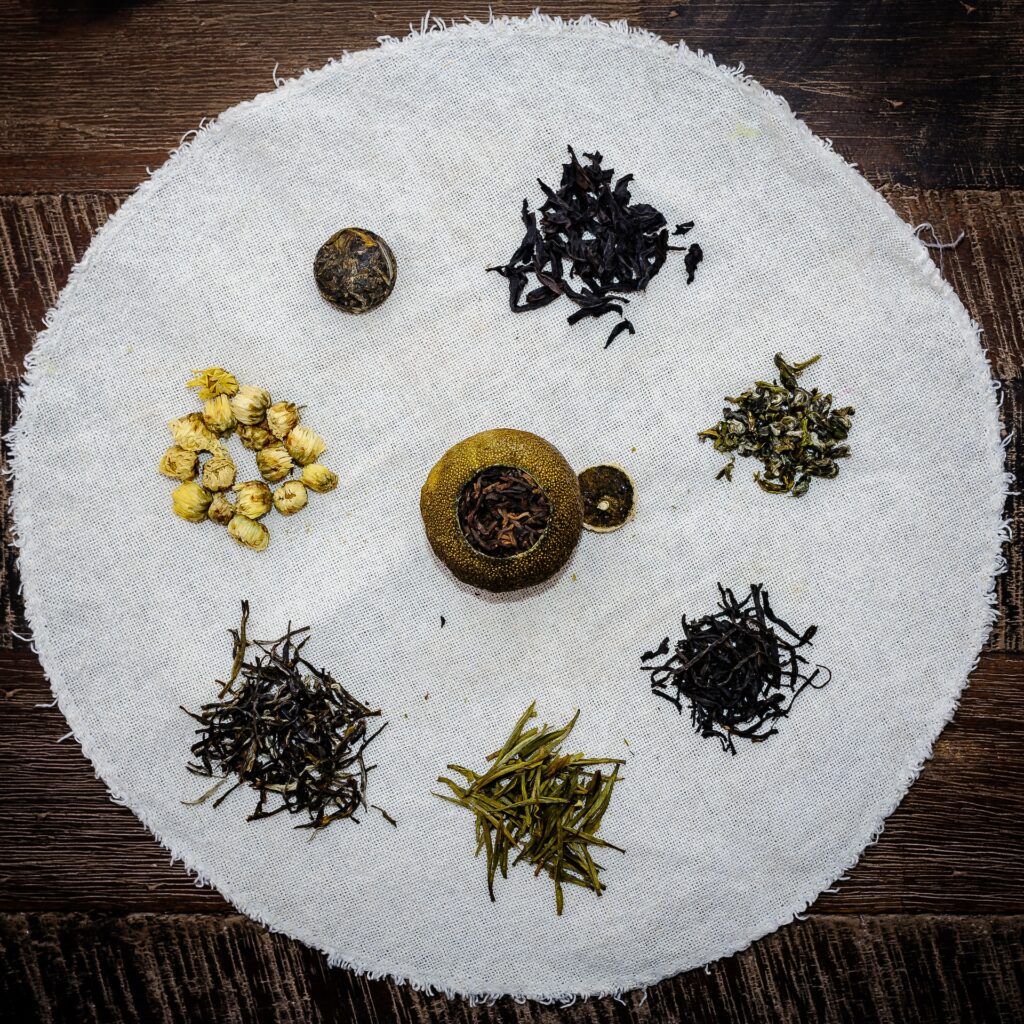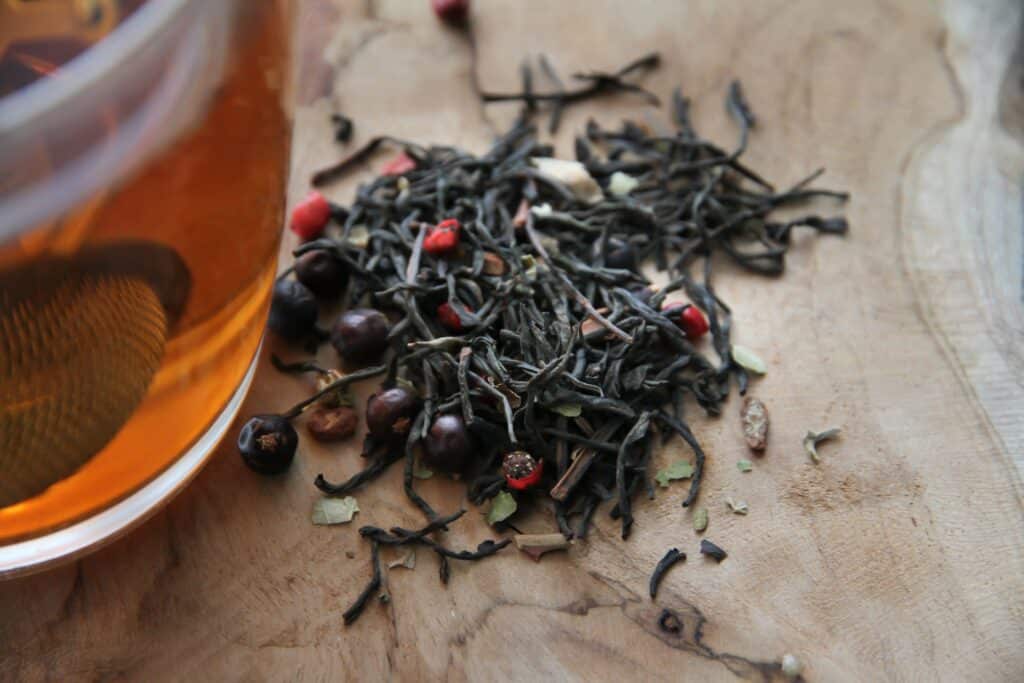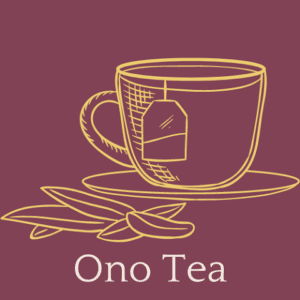People all over the world enjoy the ritual of boiling a cup of tea, but what should one do with the leftover leaves from the brewed tea leaves? There are several eco-friendly and resource-saving methods to repurpose used tea leaves. Here, we’ll examine some excellent techniques for reusing old tea leaves.
Chagra, which means “used tea leaves,” has been in use for thousands of years in cultures throughout the globe.
You can use dried tea leaves for various new purposes, including feeding plants, deodorizing, decorating, cleaning, caring for the skin, creating artwork, gardening, and even using them as a bath sachet.
Since we’re big fans of recycling around here, we thought we’d tell you about some of our favorite ways to use those used tea bags.
Creative Ways to Use Leftover Tea Leaves and Powder
Properly disposing of old tea leaves is a common concern for every tea drinker. The reality is that enjoying tea doesn’t end when you empty the cup. The steeped tea leaves’ flavor and scent may be gone, but there are still many uses for them once you recycle them. So, consider repurposing your leftover tea leaves into home items, all-natural cosmetics, and arts and crafts for an extra dosage of health and beauty in your daily life.

Use Them as Food and Seasoning
Tea leaves have several uses besides making tea. They’ve been used for millennia in tasty dishes throughout Southeast Asia. Burmese Laphet salad gets its distinctive taste from fermented tea leaves. Furthermore, you can add green chiles, roasted peanuts, and dried shrimp.
Many of us use herbs and spices to add flavor to our food. When you add them to liquid seasonings essential oils, they progressively release their aromas inside the body. Many people don’t realize that you may enhance the taste of both sweet and savory foods by adding some tea leaves to olive oil, soy sauce, or maybe even honey.
Seasoning in Salads
You may add dried tea leaves to salads or combine them with rice to create an interesting new flavor. It’s best to use them within a few hours after brewing while they’re still at their peak of flavor and aroma. It’s OK to use wet tea leaves, but always use recently harvested leaves that have been kept carefully. Also, green tea may be crushed and spread on top of various foods to provide a subtle tea flavor.
Smoking
Smoking is a time-honored method of extending the shelf life of perishable foods. People hang or rack food to smoke it over an open fire. While you can use wood smoke as a smoking agent, you can add other ingredients for a more complex flavor profile.
You may improve the scent and taste when smoking food at home by adding tea leaves to the hardwood fire and the seasoning mix. They are also excellent in marinades.
Neutralizer for the Refrigerator
Tea leaves are an effective natural remedy for eliminating smells in refrigerators. Store them in an open jar on the center rack of your refrigerator.
Also, put the used tea leaves on a baking sheet and pop them in the oven when you’ve finished with the oven. A warm oven is preferable to a hot one.
Deodorizer for Your Closet
A mixture of a spoonful of lavender and a cup of dry tea leaves can do wonders to refresh clothing. Lavender can deter moths, and green tea is a fantastic neutralizer for smelly odors. Always use adequately dry tea leaves. After each usage, put them on a paper towel to dry in the sun. If you don’t spread the leaves out, they’ll go moldy.
Cleaner for the Windows
Black tea can also make windows gleam. You’ll need 5 grams of fresh black tea leaves or 15 grams of used leaves to make one liter of tea. Just let it steep for 15 minutes and then let it cool. Make some tea, soak a cleaning cloth in it, and then wipe off the windows.

Dying Clothes
One may color shirts, skirts, and pants made of white cotton, silk, or linen with black tea. For every 200 ml of water, you should add 7 grams of used tea leaves. Prepare a big pot of water for boiling. Also, always use enough water to submerge whatever you’re dying completely. Additionally, make sure to steep your tea leaves for about thirty minutes.
Black teas may range in color from yellow to crimson. When the leaves have been strained, immerse the clean, damp object in the solution overnight. Rooibos is also a viable alternative for those seeking a reddish or orange flavor. Keep in mind that new and fresh tea leaves will produce more vibrant colors than old ones.
Composting
A plant’s best buddy may be a used tea bag. Composting tea leaves may find applications for indoor and outdoor plants. However, don’t let your guard down. Moist tea leaves quickly get moldy unless you mix them with soil in a properly made compost pile.
Plant Watering
Like humans, plants may enjoy a good cup of tea. So perhaps consider using your used tea leaves to brew a special pot for your plants that may not be as potent or flavorful. Nevertheless, it will still be beneficial to the plants.
If you forget to finish your tea before it turns color and loses taste, it’s the same thing. Use these liquids to irrigate your plants instead of flushing them down the toilet. When watering the plants with the infusion, ensure it has reached room temperature. Apply it to the foliage by spraying it with a spray bottle.
Maintaining and Cleaning Wood Furniture and Flooring
Get rid of your used black tea and put it to good use by mopping your hardwood floors.
Dip steeped tea in hot water for approximately 30 minutes. To clean tiny areas, use a towel dipped in a tea solution. Use twice as many used tea leaves and boil them in as much water as you would typically use for a cup of tea if you want to clean your flooring.
A Mask for Your Eyes
Tired eyes might benefit from using green or white tea leaves. To some extent, topical application of the catechins found in tea may aid in its anti-aging and anti-inflammatory effects. Put some used tea leaves in a cotton tea bag and put them in warm water for a few minutes. Wear them over your eyes until they have cooled to a comfortable temperature. Wait to touch for at least 5 minutes.
Brew the tea as normal, but use less water than usual, then chill it for a few hours to get a colder effect. Put some cold tea-soaked cotton pads over your dark circles.
Be cautious not to harm yourself while applying tea to your sensitive skin; use only lukewarm, cold, or chilly water.
Feet Bath
Used tea leaves are effective as feet soak for smelly feet in addition to deodorizing stinky shoes. Catechins in green tea have antibacterial, anti-inflammatory, and antimicrobial characteristics that might be useful in combating smells and germs. For a relaxing foot soak, simmer around 15 grams of used tea leaves in hot water for 30 minutes. Once the water is cool enough, you can soak your feet in it and enjoy the calming effect of the leaves.
An Exfoliation for the Skin
Antioxidants are present in abundance in tea leaves. The caffeine and antioxidants in this will make your skin look younger and reduce any inflammation. Thus, after boiling the old tea leaves, crush them into fine grains and combine them with your preferred facial cleanser to use as a homemade scrub.
If you want to use your tea leaves as a body scrub to get rid of dead skin and renew your skin all over, you may mix them with your regular body wash.
Moreover, those with sunburns may benefit from the anti-inflammatory effects contained in discarded tea leaves by soaking them in cold water and applying the solution topically. Some people would do the same to a brand-new wound to minimize the harm. Tannins in tea leaves coagulate blood, which helps end any bleeding that may be occurring.
Creating a Relaxing Bath
You can use green tea leaves to create a relaxing and moisturizing bath by filling big tea filter bags. If you want to use dried tea leaves in your bath, you’ll need around 20 grams every soak. Add a few drops of your favorite essential oil.
You may also use black tea for a bath, but be aware that it can potentially discolor the glass surface of your water fixture.

Produce Pillows
A tea pillow is just a pillowcase stuffed with loose-leaf tea. The makers claim that using them may help with anxiety, make sleeping easier, and make you feel more relaxed in general. With its antibacterial characteristics and lack of mite production in the leaves, tea is an excellent option for persons with asthma.
Keep in mind that the tea leaves will eventually break down into a powder that might seep out into the bed, so you should switch it out every two months. You can use tea leaves to stuff pillows for use in yoga and massage sessions.
Create Soaps and Candle Wax
Making your candles and soaps with herbs and spices may improve their health benefits with enough flavor and aesthetic appeal. Rather than using the same herbs you always use while making homemade soap or candles, try using tea leaves instead.
A Healthy Toothpaste and Mouthwash
While tea, like coffee, may discolor teeth, drinking it without sugar can be beneficial to oral health. Drinking tea made from steeped tea leaves may reduce tooth loss risk further due to the catechins. Having tea may make it easier to give up soda.
Consumed anything with a foul odor, or maybe garlic, just now? When you find yourself without mouthwash but need to say hello to someone, a cup of mildly flavored tea may come to the rescue. You can use tea as mouthwash simply by swishing it around in your mouth. You can create toothpaste by mixing used tea leaves with baking soda.
Final Thoughts
As you can see, there are many creative and sustainable ways to reuse your used tea leaves. From composting to cooking, the possibilities are endless. So, don’t throw away those used leaves the next time you brew a cup of tea. Instead, try out one of these creative ideas and give them a new life. Not only will you be reducing your waste, but you’ll also be exploring new and exciting ways to use this versatile ingredient.
Sources
- https://www.birdandblendtea.com/blogs/tea-academy/7-top-tips-for-recycling-your-used-tea-leaves#:~:text=Collect%20your%20used%20tea%20leaves,rose%20plants%20especially%20like%20chagra
- https://mansatea.com/blogs/learn/used-tea-leaves
- https://simplelooseleaf.com/blog/life-with-tea/how-to-use-leftover-tea/

